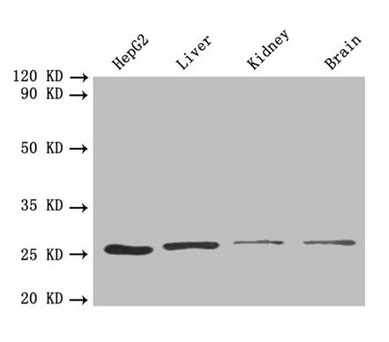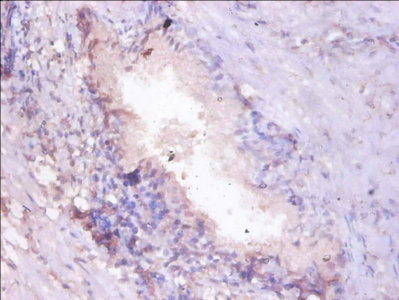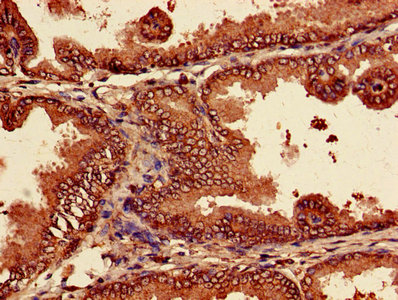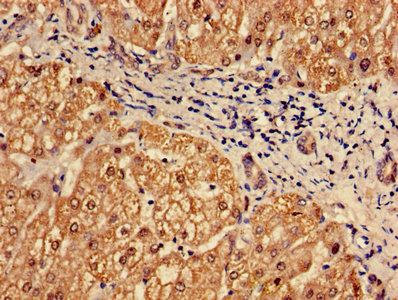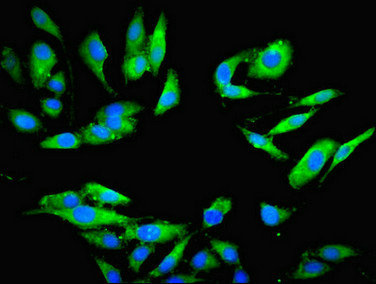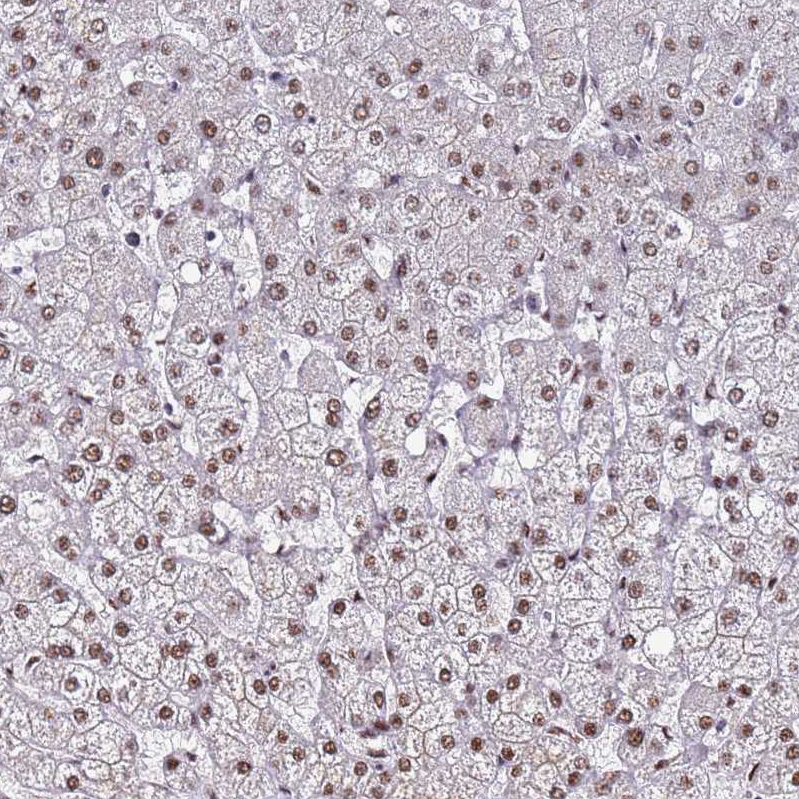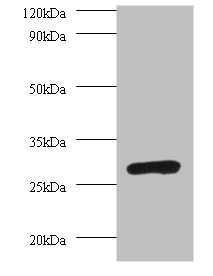
Western blot All lanes: PSMA7 antibody at 2microg/ml + 293T whole cell lysate Secondary Goat polyclonal to rabbit IgG at 1/10000 dilution Predicted band size: 28, 21, 17 kDa Observed band size: 28 kDa
PSMA7 Antibody
CSB-PA01335A0RB
ApplicationsImmunoFluorescence, Western Blot, ELISA, ImmunoHistoChemistry
Product group Antibodies
ReactivityHuman, Mouse
TargetPSMA7
Overview
- SupplierCusabio
- Product NamePSMA7 Antibody
- Delivery Days Customer20
- ApplicationsImmunoFluorescence, Western Blot, ELISA, ImmunoHistoChemistry
- CertificationResearch Use Only
- ClonalityPolyclonal
- ConjugateUnconjugated
- Gene ID5688
- Target namePSMA7
- Target descriptionproteasome 20S subunit alpha 7
- Target synonymsC6, HEL-S-276, HSPC, RC6-1, XAPC7, proteasome subunit alpha type-7, alpha-4, epididymis secretory protein Li 276, proteasome (prosome, macropain) subunit, alpha type, 7, proteasome subunit RC6-1, proteasome subunit XAPC7, proteasome subunit alpha 4, proteasome subunit alpha 7, testicular tissue protein Li 151
- HostRabbit
- IsotypeIgG
- Protein IDO14818
- Protein NameProteasome subunit alpha type-7
- Scientific DescriptionThe proteasome is a multicatalytic proteinase complex which is characterized by its ability to cleave peptides with Arg, Phe, Tyr, Leu, and Glu adjacent to the leaving group at neutral or slightly basic pH. The proteasome has an ATP-dependent proteolytic activity. Plays an important role in the regulation of cell proliferation or cell cycle control, transcriptional regulation, immune and stress response, cell differentiation, and apoptosis. Interacts with some important proteins involved in transcription factor regulation, cell cycle transition, viral replication and even tumor initiation and progression. Inhibits the transactivation function of HIF-1A under both normoxic and hypoxia-mimicking conditions. The interaction with EMAP2 increases the proteasome-mediated HIF-1A degradation under the hypoxic conditions. Plays a role in hepatitis C virus internal ribosome entry site-mediated translation. Mediates nuclear translocation of the androgen receptor (AR) and thereby enhances androgen-mediated transactivation. Promotes MAVS degradation and thereby negatively regulates MAVS-mediated innate immune response
- ReactivityHuman, Mouse
- Storage Instruction-20°C or -80°C
- UNSPSC41116161

